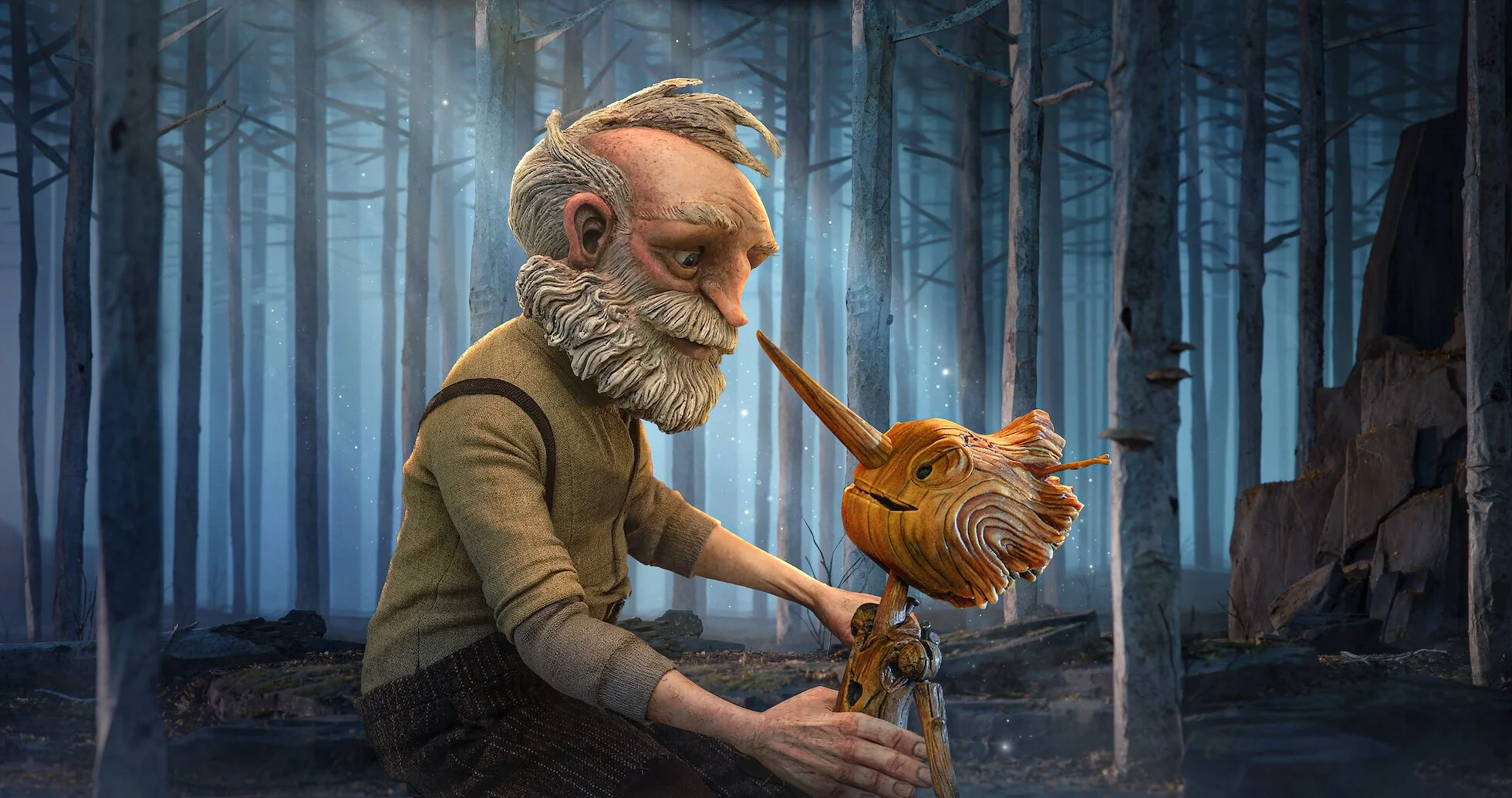Guillermo del Toro's Pinocchio
Guillermo del Toro’s Pinocchio is a feature with themes revolving around father-son relationships. The movie explores these themes through the mind of a child, allowing them to be understood in a straightforward and streamlined way.
The setup for Pinocchio is that one day, while beginning to write his memoir, novelist Sebastian J. Cricket comes across an artisan named Geppetto. Geppetto has a close-knit relationship with his son Carlo. While the two are painting their church’s crucifix, Carlo is killed after military planes, returning to base, let go of their bombs to make their ballasts lighter. Carlo’s passing leads Geppetto into mourning and alcohol abuse. Yearning to have Carlo back, Geppetto decides to construct a wooden boy. The Wood Sprite, who wants to bring joy to Geppetto, enlivens the wooden boy, naming him Pinocchio, and also asks Cricket to watch over him. She tells him if he takes on this responsibility, she’ll grant him one wish. Furthermore, Pinocchio meets Geppetto, and the story continues.
The theme of the film is that you get what you give. The first way this theme is illustrated is through Cricket’s journey. Cricket is asked by the Wood Sprite to watch over him [Pinocchio]…guide him to be good.’ She also tells him ‘take on this responsibility, and I will grant you one wish.’ At the end of the film, Cricket tells the Wood Sprite that he has responsibly completed her assignment and asks her to grant his wish. This displays Cricket as giving instruction and love, something that took a lot of love, and getting a wish that is filled with love.
The animation team chose to make Pinocchio’s design different from the illustrations in the book. Instead of making him have painted features and clothing, and making his design more similar to that of a real boy, he makes him look like an unfinished version of the book's illustrations. The decision to use stop-motion over CGI or live-action was to create a distinct version of Pinocchio, possibly to reinforce the idea that Pinocchio isn't a real boy, and to convey to the audience that this is a unique interpretation of Pinocchio.
Perhaps the decision to leave Pinocchio unfinished was intended to convey to Gepetto that Pinocchio is not Carlo, and that he should love him for who he is, just as Pinocchio and Gepetto do.
The second way this theme is illustrated is through Pinocchio’s journey. Pinocchio begins this film destroying all of Geppetto’s possessions, driven by his childhood sense of wonder and the novelty of everything around him. Gepetto asks Pinocchio several times to stop, but he keeps touching everything. This beginning presents Pinocchio as reckless yet curious.
The animation of the film is spectacular. It uses stop-motion to give all the characters detailed facial expressions. The way the animation team crafted the water was the highlight of the visuals. They made it look solid to go with the clay and wood atmosphere of the film, yet loose to replicate water.
